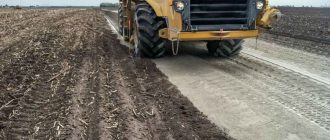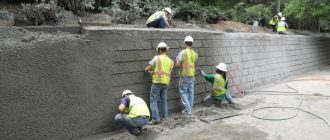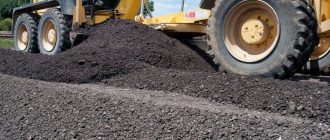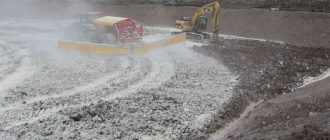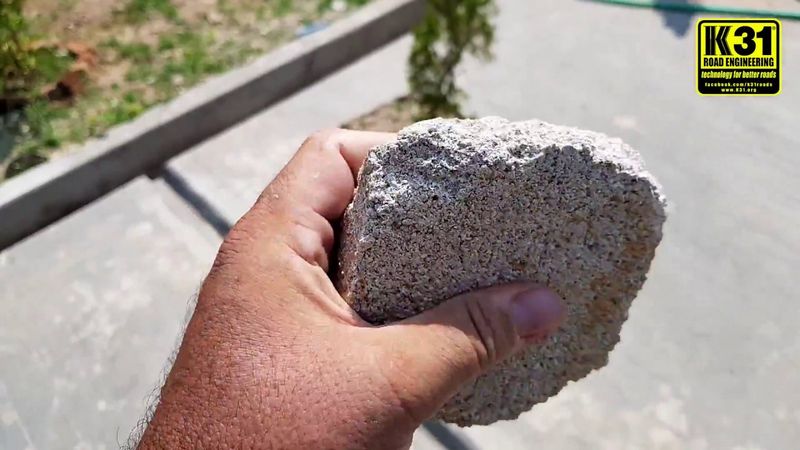
Understanding the Mechanism of Polymer Stabilization: A Comprehensive Analysis
Polymer stabilization is a crucial process in the production of various materials that utilize polymers. Polymers are large molecules made up of repeating subunits, and they have a wide range of applications due to their unique properties. However, polymers are susceptible to degradation and loss of properties when exposed to environmental factors such as heat, light, and chemicals.
The stabilization mechanism involves the use of additives to improve the resistance of polymers to degradation. These additives function by interrupting or slowing down the degradation reactions that occur in polymers. They act as scavengers, capturing and neutralizing free radicals that are responsible for the degradation of polymer chains.
One common type of additive used in polymer stabilization is antioxidants. Antioxidants work by donating hydrogen atoms to free radicals, thereby stabilizing them and preventing chain scission. They can be categorized into primary antioxidants, which are effective at the initiation stage of degradation, and secondary antioxidants, which are effective at the propagation stage.
Another type of additive used in polymer stabilization is light stabilizers. These additives protect polymers from degradation caused by UV radiation. They function by absorbing the UV light and dissipating the energy as heat, thereby preventing the formation of free radicals. Light stabilizers can be categorized into UV absorbers and hindered amine light stabilizers (HALS), depending on their mechanism of action.
In conclusion, polymer stabilization is a critical process in preserving the properties of polymers. By using additives such as antioxidants and light stabilizers, the degradation of polymers can be significantly reduced, leading to improved durability and longevity of polymer-based materials.
Understanding Polymer Stabilization
Polymer stabilization refers to the process of enhancing the durability and longevity of polymers. Polymers are susceptible to degradation due to various environmental factors, such as heat, light, and oxygen exposure. Stabilization mechanisms aim to minimize or prevent these degradation processes, thereby improving the performance and lifespan of polymers.
There are several ways in which polymer stabilization can be achieved. One common method is through the use of stabilizers, which are chemical additives that are incorporated into the polymer matrix. These stabilizers can act as antioxidants, UV absorbers, or hindered amine light stabilizers (HALS), among other functions. Stabilizers can scavenge free radicals, absorb UV radiation, or inhibit the degradation of polymers under light exposure.
Another approach to polymer stabilization is through the modification of the polymer structure itself. This can involve the introduction of cross-linking agents, which create covalent bonds between polymer chains, making the material more resistant to degradation. Cross-linking can be achieved through various methods, such as chemical cross-linking, radiation-induced cross-linking, or physical cross-linking.
| Stabilization Mechanism | Description |
|---|---|
| Antioxidants | These chemical additives scavenge free radicals that are generated during the degradation process, preventing further degradation. |
| UV Absorbers | These additives absorb UV radiation, protecting the polymer from the harmful effects of UV exposure, such as photo-oxidation. |
| HALS | Hindered amine light stabilizers act as radical scavengers, preventing the degradation of polymers under light exposure. |
| Cross-linking | The introduction of covalent bonds between polymer chains increases the material’s resistance to degradation. |
Understanding the mechanisms of polymer stabilization is crucial for developing durable and reliable polymer-based materials. By selecting the appropriate stabilization methods and additives, it is possible to enhance the performance and lifespan of polymers, making them suitable for a wide range of applications.
How Do Polymers Stabilize Soil?
Polymers play a crucial role in stabilizing soil, especially in construction and agricultural applications. They are used to improve the mechanical properties of soil, enhance its stability, and prevent erosion. Here are some ways in which polymers achieve soil stabilization:
1. Increased Cohesion: Polymers can increase the cohesion between soil particles, thereby improving the overall stability of the soil. This is particularly important in areas where the soil is loose or sandy, as it helps to prevent soil erosion and maintain the structural integrity of the ground.
2. Water Retention: Polymers have the ability to absorb and retain water, which can be beneficial in stabilizing soil. By retaining moisture, polymers can prevent the soil from drying out and becoming brittle, thus reducing the likelihood of cracks and fissures forming.
3. Reduced Swelling and Shrinkage: Polymers can help control the swelling and shrinkage of soil, which can occur due to changes in moisture content. By stabilizing the soil’s volume, polymers can minimize the risk of ground movement and subsidence, ensuring the stability of structures built on the soil.
4. Enhanced Load-Bearing Capacity: Polymers can increase the load-bearing capacity of soil, making it more suitable for supporting heavy structures or equipment. This is achieved by improving the soil’s compaction and density, reducing its compressibility, and increasing its resistance to deformation under load.
5. Erosion Control: Polymers can help prevent erosion by binding soil particles together and forming a protective layer on the surface. This layer acts as a barrier, preventing the loss of soil due to wind, rain, or other external forces. It also helps to maintain the integrity of slopes and embankments, reducing the risk of landslides.
In conclusion, polymers provide several mechanisms for stabilizing soil, including increased cohesion, water retention, reduced swelling and shrinkage, enhanced load-bearing capacity, and erosion control. These properties make polymers an invaluable tool in various industries that rely on stable and durable soil conditions.
Common Types of Polymers Used for Soil Stabilization
Soil stabilization is a process that involves improving the strength and durability of soil, making it suitable for construction purposes. One effective method of soil stabilization involves the use of polymers. Polymers are long chains of molecules that can improve the properties of soil, such as its strength, cohesion, and water resistance.
There are several types of polymers commonly used for soil stabilization:
| Polymers | Properties | Applications |
|---|---|---|
| Polyacrylamide (PAM) | Improves soil structure and stability, reduces erosion | Road construction, erosion control, landscaping |
| Polyvinyl Alcohol (PVA) | Increases soil strength, reduces water infiltration | Landfill construction, slope stabilization, foundation improvement |
| Polyurethane (PU) | Enhances soil bonding, improves load-bearing capacity | Highway construction, pavement stabilization, soil reinforcement |
| Methylcellulose (MC) | Improves soil viscosity and workability, reduces settling | Tunneling, excavation, underground construction |
These polymers can be applied to the soil in various forms, such as powders, liquids, or emulsions. They can be mixed with the soil directly or injected into the ground through specialized equipment. The choice of polymer depends on the specific soil conditions and desired results.
Overall, the use of polymers for soil stabilization offers numerous benefits, including increased soil strength, reduced erosion, improved water resistance, and enhanced construction efficiency. By selecting the appropriate polymer and application method, engineers and construction professionals can achieve stable and durable soil for various types of projects.
Modifying Plasticity and Agglomeration
One of the key challenges in polymer stabilization is modifying the plasticity and agglomeration of the polymer material. Plasticity refers to the ability of a material to undergo permanent deformation under applied stress without fracturing. Agglomeration, on the other hand, refers to the tendency of polymer particles to form clusters or aggregates.
To modify the plasticity of a polymer, various techniques can be employed. One approach is to add plasticizers, which are low molecular weight compounds that can increase the flexibility and reduce the stiffness of the polymer. Plasticizers work by reducing the intermolecular forces between polymer chains, allowing them to slide more easily past each other and increasing the material’s plasticity.
Another method to modify plasticity is through the use of crosslinking agents. Crosslinking involves chemically bonding polymer chains together, creating a three-dimensional network structure. This network structure restricts the movement of polymer chains, making the material less prone to plastic deformation.
In addition to modifying plasticity, controlling agglomeration is also important in polymer stabilization. Agglomeration can lead to uneven distribution of additives, reduced mechanical properties, and difficulties in processing the polymer material.
To prevent agglomeration, various techniques can be employed. One approach is to use dispersing agents, which are surface-active molecules that reduce the attractive forces between polymer particles, preventing them from coming together and forming aggregates. Dispersing agents can be added during the polymer manufacturing process or during the processing of the polymer material.
Another method to control agglomeration is through the use of anti-agglomerating agents. These agents work by modifying the surface properties of the polymer particles, reducing their affinity for each other and preventing the formation of aggregates.
Overall, modifying the plasticity and agglomeration of polymer materials is crucial for achieving desired mechanical properties and processing characteristics. By employing techniques such as plasticization, crosslinking, dispersing agents, and anti-agglomerating agents, researchers and engineers can tailor the properties of polymers to meet specific application requirements.
Effects of Polymers on Soil Plasticity
Polymers play a significant role in modifying the plasticity of soil. When added to soil, polymers can alter its mechanical properties, such as its ability to deform under stress and its resistance to compaction. This can have important implications for various engineering applications, including road construction, foundation design, and slope stability.
One of the main effects of polymers on soil plasticity is their ability to increase its shear strength. Polymers can form a network within the soil matrix, creating a bond between soil particles and enhancing their cohesion. This results in an overall increase in the soil’s resistance to shear deformation, making it more stable and less prone to failure.
In addition to increasing shear strength, polymers can also improve the soil’s compressibility. By reducing the void ratio and increasing the soil’s density, polymers can decrease its compressibility and increase its stiffness. This can be particularly beneficial in areas with weak or loose soils, where increased stiffness can help prevent excessive settlement or consolidation.
Moreover, polymers can also enhance the soil’s water retention properties. By absorbing water and preventing its drainage, polymers can increase the soil’s moisture content and improve its plasticity. This is particularly important in dry or arid regions, where soil moisture can be a limiting factor for construction or agricultural activities.
Overall, the effects of polymers on soil plasticity are diverse and depend on various factors, such as the type and concentration of the polymer, the soil composition, and the environmental conditions. Understanding these effects is crucial for optimizing the use of polymers in soil stabilization and ensuring the long-term performance of engineering structures.
Agglomeration and Improved Soil Structure
One of the key benefits of polymer stabilization in soil is the improvement of soil structure through agglomeration. Agglomeration refers to the process of particles coming together to form larger, more stable aggregates. This is especially important in soils that are prone to erosion or have poor structure.
When polymers are added to the soil, they act as binding agents, helping to hold the soil particles together. This promotes the formation of larger aggregates, which can improve soil structure and stability. The larger aggregates have increased resistance to erosion and can withstand the impact of heavy rainfall or wind.
In addition to improving soil structure, agglomeration also enhances soil water holding capacity. The larger aggregates create more pore spaces, allowing for better water infiltration and retention. This can be especially beneficial in dry or arid regions where water is limited.
Furthermore, the improved soil structure resulting from agglomeration can lead to better root penetration and development. The larger aggregates provide a more favorable environment for plant roots to grow and access nutrients and water. This can result in increased plant growth and productivity.
In summary, polymer stabilization promotes agglomeration and improved soil structure, which has several benefits for soil health and plant growth. It enhances soil stability, reduces erosion, improves water retention, and provides a favorable environment for root development. These improvements can contribute to sustainable agriculture and environmental conservation.
Polymer vs. Lime or Cement Stabilization
Polymer stabilization and lime or cement stabilization are two common methods used for soil stabilization in construction projects. While both techniques aim to improve the engineering properties of soils, there are some key differences between them.
Lime or cement stabilization involves the addition of lime or cement to the soil to improve its strength and durability. Lime or cement reacts with the soil particles, forming chemical bonds that increase the cohesion and load-bearing capacity of the soil. This process is commonly used for stabilizing clayey soils, as lime or cement can help reduce their plasticity and improve their workability.
Polymer stabilization, on the other hand, involves the addition of polymers to the soil. Polymers are long-chain molecules that can bond with soil particles, creating a network of interconnected chains. This network enhances the soil’s cohesion and reduces its compressibility. Polymer stabilization is often used for stabilizing sandy or silty soils, as polymers can improve their strength and prevent excessive settlement.
One advantage of polymer stabilization over lime or cement stabilization is its flexibility. Polymers can be customized to suit specific soil conditions and project requirements. They can be used in different concentrations and combinations to achieve the desired soil properties. Additionally, polymer stabilization does not require the addition of large amounts of water, making it suitable for areas with limited water supply.
Another advantage of polymer stabilization is its environmental friendliness. Polymers are non-toxic and do not release harmful substances into the soil or groundwater. In contrast, lime or cement stabilization may result in the leaching of lime or cement into the environment, potentially causing pollution.
However, lime or cement stabilization has its own advantages. Lime or cement is readily available and relatively inexpensive compared to polymers. It also has a long history of use in construction, with proven effectiveness in stabilizing a wide range of soil types.
Both polymer stabilization and lime or cement stabilization are effective methods for soil stabilization. The choice between them depends on factors such as soil type, project requirements, and environmental considerations. It is important to carefully evaluate these factors and consult with engineering professionals to determine the most suitable stabilization technique for a specific construction project.
Comparing Polymer Stabilization to Lime and Cement
Polymer stabilization is a method used to improve the engineering properties of soils. It involves the addition of polymer materials to the soil, which then react with the soil particles to form a stable and durable matrix. This process has been widely used in various construction projects due to its numerous advantages over traditional stabilization techniques such as lime and cement.
One major advantage of polymer stabilization is its ability to provide a quicker and more efficient stabilization process. Unlike lime and cement, which require significant curing time, polymer stabilization can be completed in a relatively short period. This allows for faster construction and reduces downtime, resulting in cost savings for the project.
In addition to its speed, polymer stabilization also offers improved flexibility and adaptability. The polymer materials can be easily mixed with the soil and can be applied to a wide range of soil types, including clay, silt, and sand. This makes it a versatile option for stabilizing different types of soils, regardless of their composition or characteristics.
Furthermore, polymer stabilization is environmentally friendly compared to lime and cement. The polymer materials used in the stabilization process are non-toxic and do not release harmful chemicals into the environment. This makes polymer stabilization a sustainable choice that minimizes the impact on the surrounding ecosystem.
Another advantage of polymer stabilization is its long-term durability. The polymer materials form a strong bond with the soil particles, creating a stable and durable matrix that can withstand various environmental conditions. This results in improved resistance to erosion, settlement, and cracking, ensuring the longevity of the stabilized soil.
Overall, polymer stabilization offers several advantages over traditional stabilization techniques such as lime and cement. Its speed, flexibility, environmental friendliness, and long-term durability make it a preferred choice for soil stabilization in various construction projects.
Strengths and Limitations of Polymer Stabilization
Polymer stabilization is a widely used method for enhancing the properties of polymers and increasing their durability. This technique offers several strengths that make it a popular choice in various industries.
Strengths:
1. Improved mechanical properties: Polymer stabilization can significantly enhance the strength and toughness of polymers, making them more resistant to deformation and breakage. This is especially beneficial in applications where the polymer needs to withstand high loads or impacts.
2. Increased thermal stability: By stabilizing polymers, their resistance to heat and temperature fluctuations can be improved. This makes them suitable for use in high-temperature environments without compromising their structural integrity.
3. Enhanced chemical resistance: Polymer stabilization can make polymers more resistant to chemical degradation, allowing them to withstand exposure to harsh chemicals and solvents. This is particularly advantageous in industries such as automotive, aerospace, and chemical processing.
4. Improved UV resistance: Polymer stabilization can protect polymers from the damaging effects of ultraviolet (UV) radiation, such as yellowing, cracking, and degradation. This makes them suitable for outdoor applications where they are exposed to sunlight.
5. Extended lifespan: By enhancing the properties and resistance of polymers, stabilization can significantly extend their lifespan. This can lead to cost savings in terms of material replacement and maintenance.
Despite its many strengths, polymer stabilization also has its limitations:
Limitations:
1. Increased cost: The process of polymer stabilization can be expensive, requiring specialized equipment and materials. This can make it less cost-effective for certain applications, especially those with low production volumes.
2. Complexity: Polymer stabilization techniques often involve complex chemical reactions and processes. This requires skilled professionals and careful control to ensure the desired results are achieved consistently.
3. Limited effectiveness for certain polymers: While polymer stabilization is effective for many types of polymers, it may not be suitable for all. Some polymers may not respond well to stabilization techniques, limiting their potential for improvement.
4. Potential environmental impact: The chemicals and materials used in polymer stabilization can have environmental implications if not properly handled and disposed of. It is important to follow proper waste management protocols to minimize any negative impact.
Despite these limitations, polymer stabilization remains a valuable tool for improving the properties and performance of polymers, and ongoing research continues to expand its capabilities and address its limitations.
Application Methods
The application of polymer stabilization mechanisms can be achieved through various methods. These methods include:
1. Mixing: In this method, the polymer stabilizers are mixed with the polymer matrix during the manufacturing process. The stabilizers are typically added in small amounts and evenly distributed throughout the polymer to ensure uniform stabilization.
2. Coating: Coating is another common method used for polymer stabilization. In this method, the polymer stabilizers are applied as a coating on the surface of the polymer. The coating acts as a protective layer, preventing degradation caused by external factors such as UV radiation and heat.
3. Impregnation: Impregnation involves the penetration of polymer stabilizers into the polymer matrix. This method is commonly used for porous polymers, where the stabilizers can be absorbed into the polymer structure, providing long-lasting stabilization.
4. Immersion: Immersion is a method in which the polymer is immersed in a solution containing the stabilizers. The stabilizers penetrate the polymer matrix through diffusion, providing stabilization throughout the material. This method is often used for bulk polymers.
5. Extrusion: Extrusion is a process in which the polymer is melted and forced through a die to form a continuous shape. Polymer stabilizers can be added to the polymer melt before extrusion to ensure stabilization throughout the formed shape.
6. Injection: Injection molding is a widely used method for manufacturing polymer products. In this method, the polymer is melted and injected into a mold. Polymer stabilizers can be added to the polymer melt before injection to provide stabilization during the molding process.
7. Surface Modification: Surface modification involves the treatment of the polymer surface with polymer stabilizers. This method is commonly used for films and coatings, where the stabilizers can be applied directly to the surface to provide protection against degradation.
8. Encapsulation: Encapsulation is a method in which the polymer stabilizers are encapsulated in microcapsules or nanoparticles. These capsules or particles are then incorporated into the polymer matrix, providing localized protection against degradation.
Each of these application methods offers unique advantages and is suitable for different types of polymers and applications. The choice of method depends on factors such as the desired level of stabilization, the type of polymer, and the intended application of the stabilized polymer product.
Techniques for Applying Polymer in Soil Stabilization
Soil stabilization is the process of improving the properties of soil to increase its strength and durability. One effective method of soil stabilization is the use of polymers, which can enhance the performance of the soil and provide long-term stability. There are several techniques for applying polymers in soil stabilization, each with its own advantages and limitations.
Mixing the polymer with soil: One technique involves mixing the polymer with the soil during construction. This can be done by adding the polymer in powder or liquid form to the soil and then thoroughly mixing it. The polymer binds with the soil particles, creating a stronger and more stable soil matrix. This technique is commonly used for stabilizing roads, embankments, and other large-scale construction projects.
Injection: Another technique is injecting the polymer directly into the soil. This is typically done using specialized equipment that injects the polymer deep into the ground. The polymer then reacts with the soil, forming a solid and stable mass. Injection is often used for stabilizing foundations, slopes, and retaining walls, as it allows for precise control of the polymer distribution.
Spraying or spreading: Spraying or spreading the polymer on the soil surface is another common technique. This involves applying the polymer in liquid form using sprayers or spreaders. The polymer then penetrates the soil and bonds with the particles, improving its strength and stability. This technique is often used for stabilizing smaller areas, such as gardens, walkways, and parking lots.
Reinforcement: In some cases, polymers can be used to reinforce existing soil structures. This technique involves applying the polymer to the surface of the soil or embedding it within the soil layers. The polymer forms a network within the soil, increasing its tensile strength and preventing cracking and deformation. Reinforcement is commonly used for stabilizing slopes, retaining walls, and erosion-prone areas.
Benefits of polymer soil stabilization: Applying polymers in soil stabilization offers several benefits. It improves the load-bearing capacity of the soil, reducing the risk of settlement and failure. Polymers also increase resistance to erosion, water infiltration, and freeze-thaw cycles. Additionally, polymer stabilization can be more cost-effective and time-efficient compared to traditional stabilization methods.
In conclusion, there are several techniques available for applying polymer in soil stabilization. Each technique has its own advantages and is suitable for different types of soil and construction projects. By understanding these techniques and their benefits, engineers and construction professionals can effectively use polymer stabilization to enhance the performance and durability of soil structures.
Ensuring Uniform Distribution of Polymers
Uniform distribution of polymers is crucial for their effective stabilization mechanism. When polymers are not evenly distributed, certain areas of the material may be more susceptible to degradation and deterioration.
To ensure uniform distribution of polymers, several techniques can be employed:
- Mechanical Mixing: One of the simplest methods is to use mechanical mixing to disperse the polymers evenly throughout the material. This can be achieved through the use of mixers or blending equipment.
- Chemical Additives: Chemical additives can be used to enhance the dispersibility of polymers. These additives can modify the surface properties of the material, allowing the polymers to spread and adhere more uniformly.
- Surface Treatment: Surface treatment techniques, such as plasma treatment or corona treatment, can improve the adhesion between the polymers and the material’s surface. This promotes better distribution of the polymers and reduces the risk of localized degradation.
- Incorporation during Processing: Polymers can be incorporated into the material during the processing stage, such as during extrusion or molding. This ensures that the polymers are uniformly dispersed throughout the material from the beginning.
- Particle Size Control: Controlling the particle size of the polymers can also help achieve uniform distribution. Smaller particles are more likely to disperse evenly throughout the material compared to larger particles.
By employing these techniques, manufacturers can ensure that polymers are uniformly distributed within the material, enhancing their stabilization mechanism and improving the overall performance and lifespan of the product.
Limitations of Polymer Stabilization
While polymer stabilization is an effective method for enhancing the properties of polymers, it does have some limitations. One major limitation is the potential for the stabilization process to alter the mechanical properties of the polymer. In some cases, the addition of stabilizers can result in a decrease in the overall strength or stiffness of the polymer.
Another limitation is the limited effectiveness of stabilization in certain extreme environments. For example, polymers that are exposed to high temperatures or intense UV radiation may still experience degradation, even with the addition of stabilizers. This is because the stability of the stabilizers themselves can be compromised under these conditions.
Furthermore, the stability of the stabilizers can also be affected by other factors, such as the presence of impurities or other additives in the polymer. These impurities or additives may interact with the stabilizers and reduce their effectiveness, leading to accelerated degradation of the polymer.
Additionally, the cost of incorporating stabilizers into polymers can be a limitation. Stabilizers can be expensive, especially if high concentrations are required to achieve the desired level of stabilization. This can make the production of stabilized polymers more costly compared to unstabilized polymers.
Lastly, the durability of the stabilization can also be a limitation. Over time, the stabilizers may become less effective, resulting in gradual degradation of the polymer. This can limit the lifespan of products made from stabilized polymers.
Overall, while polymer stabilization is a valuable tool for improving the properties of polymers, it is important to consider its limitations and carefully select appropriate stabilizers and processing conditions to ensure optimal performance and longevity of the stabilized polymers.
Identifying Constraints and Challenges in Polymer Stabilization
Polymer stabilization is a crucial process in various industries, including plastics, rubber, and adhesives. However, this process is often faced with numerous constraints and challenges that need to be identified and addressed to ensure the production of high-quality and durable polymer products.
One of the main constraints in polymer stabilization is the degradation of polymer chains. This can occur due to various factors such as heat, light, and exposure to chemicals. Identifying the specific degradation mechanisms and understanding their impact on the stability of polymers is essential to develop effective stabilization methods.
Another challenge in polymer stabilization is the selection of suitable stabilizers. Stabilizers are added to polymers to prevent or delay degradation. However, choosing the right stabilizers can be a complex task as different polymers require different types and concentrations of stabilizers. Identifying the optimal stabilizer for a specific polymer and application is crucial to ensure long-term stability.
Furthermore, the processing conditions can also pose challenges in polymer stabilization. Factors such as temperature, pressure, and shear forces during processing can affect the stability of polymers. Identifying the optimal processing conditions that minimize degradation and maximize stabilization is essential to achieve consistent and high-quality polymer products.
In addition to these constraints, environmental considerations also play a significant role in polymer stabilization. With increasing concerns about sustainability and environmental impact, it is essential to develop stabilization methods that are eco-friendly and do not contribute to pollution or waste. Identifying environmentally friendly stabilizers and developing sustainable stabilization processes is crucial in the modern era.
Overall, identifying and addressing the constraints and challenges in polymer stabilization is essential to ensure the production of high-quality and durable polymer products. By understanding the degradation mechanisms, selecting suitable stabilizers, optimizing processing conditions, and considering environmental factors, industries can overcome these challenges and achieve stable and sustainable polymer products.
Combating Limitations with Innovative Approaches
Despite the numerous benefits of polymer stabilization, there are certain limitations that researchers and engineers have encountered. These limitations often hinder the full potential of polymer stabilization in various applications. However, with innovative approaches, scientists are finding new ways to overcome these limitations and enhance the effectiveness of polymer stabilization.
One of the main limitations is the degradation of polymers under certain environmental conditions, such as high temperatures or exposure to UV radiation. To combat this, researchers are developing new types of polymers with enhanced thermal stability and UV resistance. These polymers are designed to withstand harsh conditions and maintain their structural integrity over extended periods of time.
Another limitation is the difficulty in achieving uniform dispersion of stabilizers within the polymer matrix. Non-uniform dispersion can result in localized degradation and reduced performance of the stabilized polymer. To address this, scientists are exploring novel techniques such as functionalization of stabilizers or the use of nanotechnology to achieve better dispersion and integration of stabilizers within the polymer matrix.
Furthermore, the limited compatibility between stabilizers and polymers can also pose a challenge. Some stabilizers may have poor solubility or may not interact effectively with certain types of polymers. To overcome this limitation, researchers are developing new stabilizers that have improved compatibility with a wide range of polymers, ensuring efficient stabilization across different applications.
Additionally, the cost of stabilizers can be a significant limitation, especially for large-scale industrial applications. To address this, scientists are exploring the use of cost-effective and sustainable stabilizers, such as natural antioxidants or recyclable stabilizers, that can provide comparable or even superior stabilization performance while reducing overall costs.
| Limitation | Innovative Approach |
|---|---|
| Degradation under harsh conditions | Developing polymers with enhanced thermal stability and UV resistance |
| Non-uniform dispersion of stabilizers | Exploring functionalization techniques and nanotechnology for better dispersion |
| Limited compatibility between stabilizers and polymers | Developing stabilizers with improved compatibility |
| High cost of stabilizers | Exploring cost-effective and sustainable stabilizers |
In conclusion, despite the limitations associated with polymer stabilization, innovative approaches are being developed to overcome these challenges. Through the development of new polymers, improved dispersion techniques, enhanced compatibility, and cost-effective stabilizers, scientists are pushing the boundaries of polymer stabilization and unlocking its full potential in various applications.
Q&A:
What is the polymer stabilization mechanism?
The polymer stabilization mechanism refers to the process by which additives are used to enhance the stability and durability of polymers. These additives can help prevent degradation and improve the overall performance of the polymer material.
Why is polymer stabilization important?
Polymer stabilization is important because polymers can be prone to various forms of degradation, such as oxidation, UV degradation, and thermal degradation. By stabilizing the polymer, its lifespan can be extended and its performance can be enhanced.
What are some common additives used for polymer stabilization?
There are several common additives used for polymer stabilization, including antioxidants, UV absorbers, light stabilizers, heat stabilizers, and flame retardants. These additives can help protect the polymer from different forms of degradation.
How do antioxidants work in polymer stabilization?
Antioxidants work by scavenging free radicals that are generated during the degradation process. These free radicals can cause chain scission and lead to the degradation of the polymer. Antioxidants help neutralize these free radicals and prevent further degradation.
What are some methods used for polymer stabilization?
Some methods used for polymer stabilization include blending the polymer with stabilizing additives, incorporating stabilizers into the polymer matrix during the manufacturing process, and coating the polymer with a protective layer. These methods can help improve the stability and durability of the polymer.
What is polymer stabilization mechanism?
Polymer stabilization mechanism refers to the process through which polymers are protected against degradation caused by various external factors such as heat, light, and oxygen. It involves the addition of stabilizers that can scavenge free radicals or inhibit the degradation reactions, thus prolonging the lifespan of the polymer.

